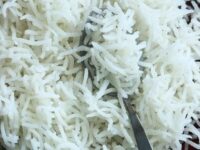Explained: Why use of scrap in steel production is vital to mitigate pollution

Union Steel Minister Jyotiraditya Scindia said on Saturday that his department will encourage primary steel makers to use 50% of their input from recycled or scrap steel by 2047 in order to reduce CO2 emissions and move toward a green economy that will protect Mother Earth.
How polluting is crude steel production?
With a production capacity of approximately 120 million tonnes, India has grown to become the world’s second-largest steel manufacturer. The steel industry is expected to grow double over the next decade.
In this context, the consumption of huge amount of energy and resources for steel production need to be tackled. The most concerning part is, in its current state, it is extremely polluting. A tonne of steel today emits 2.55 tonnes of carbon dioxide. ALSO READ: Study proposes profitable ways to repurpose industrial waste
How use of scrap in steel production help mitigate pollution?
Steel production using scrap as the primary raw material helps to conserve vital natural resources, among other advantages. According to the steel scrap recycling policy of Ministry of Steel, each tonne of scrap saves 1.1 tonne of iron ore, 630 kg of coking coal, and 55 kg of limestone. It reduces energy consumption by 16-17%. Additionally, it cuts water consumption and GHG emissions by 40% and 58%, respectively, the report states.
In the last 8 years, where the country has raked up its steel production from 80 million per annum to 120 million tonnes per annum, use of scrap is modest 30 million tonnes. ALSO READ: Aim is to double steel production in 10 years: PM Modi
Challenges in reuse of steel scrap
1. It is difficult to ensure that scrap steel meets the necessary quality criteria for reuse because it may have deteriorated over time or been contaminated, which is a major barrier to output quality control.
2. Steel scrap frequentl y consists of a variety of steel types and grades that must be separated and sorted before they can be reused.
3. Because of its volume and mass, moving and storing large amounts of steel scrap can be difficult.
4. Depending on its intended use, steel scrap may necessitate a variety of processing steps that can be extremely energy-intensive and potentially harmful to the environment.
5. India relies heavily on imports of high-grade steel scrap to meet its demand. However, several countries, including the UAE and the EU, have restricted exports, making raw materials scarce.

Atul Tiwari is a seasoned journalist at Mumbai Times, specializing in city news, culture, and human-interest stories. With a knack for uncovering compelling narratives, Atul brings Mumbai’s vibrant spirit to life through his writing.





